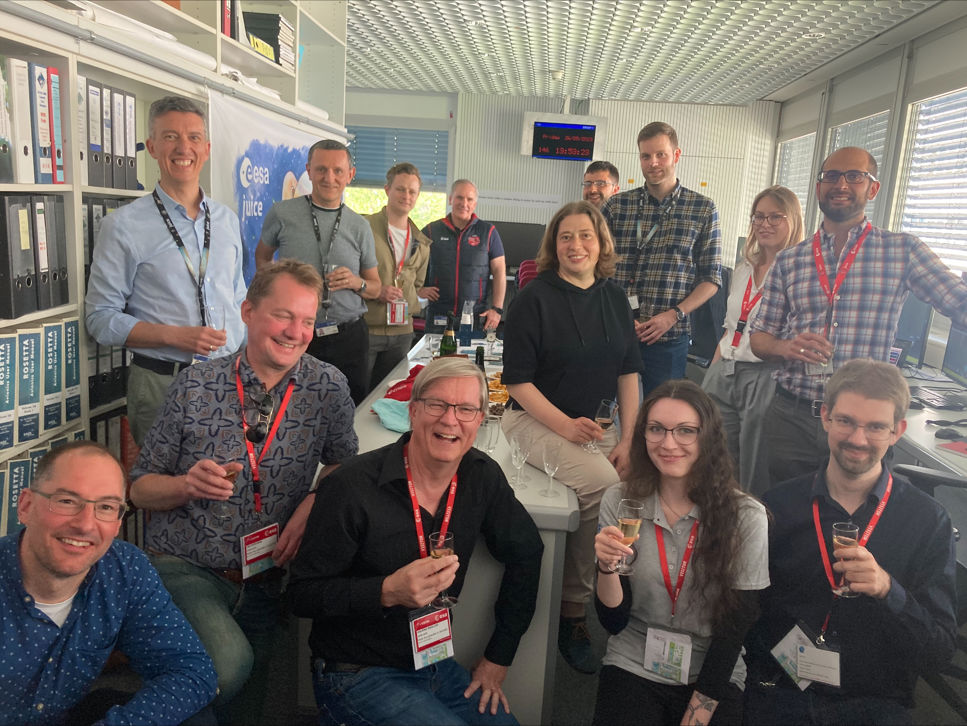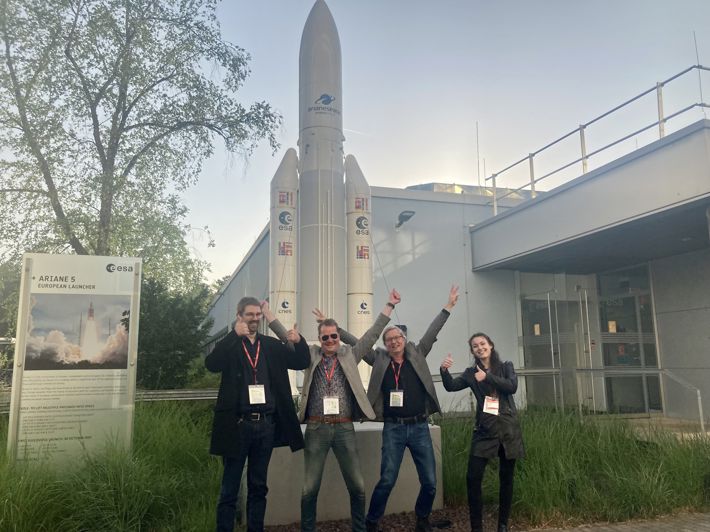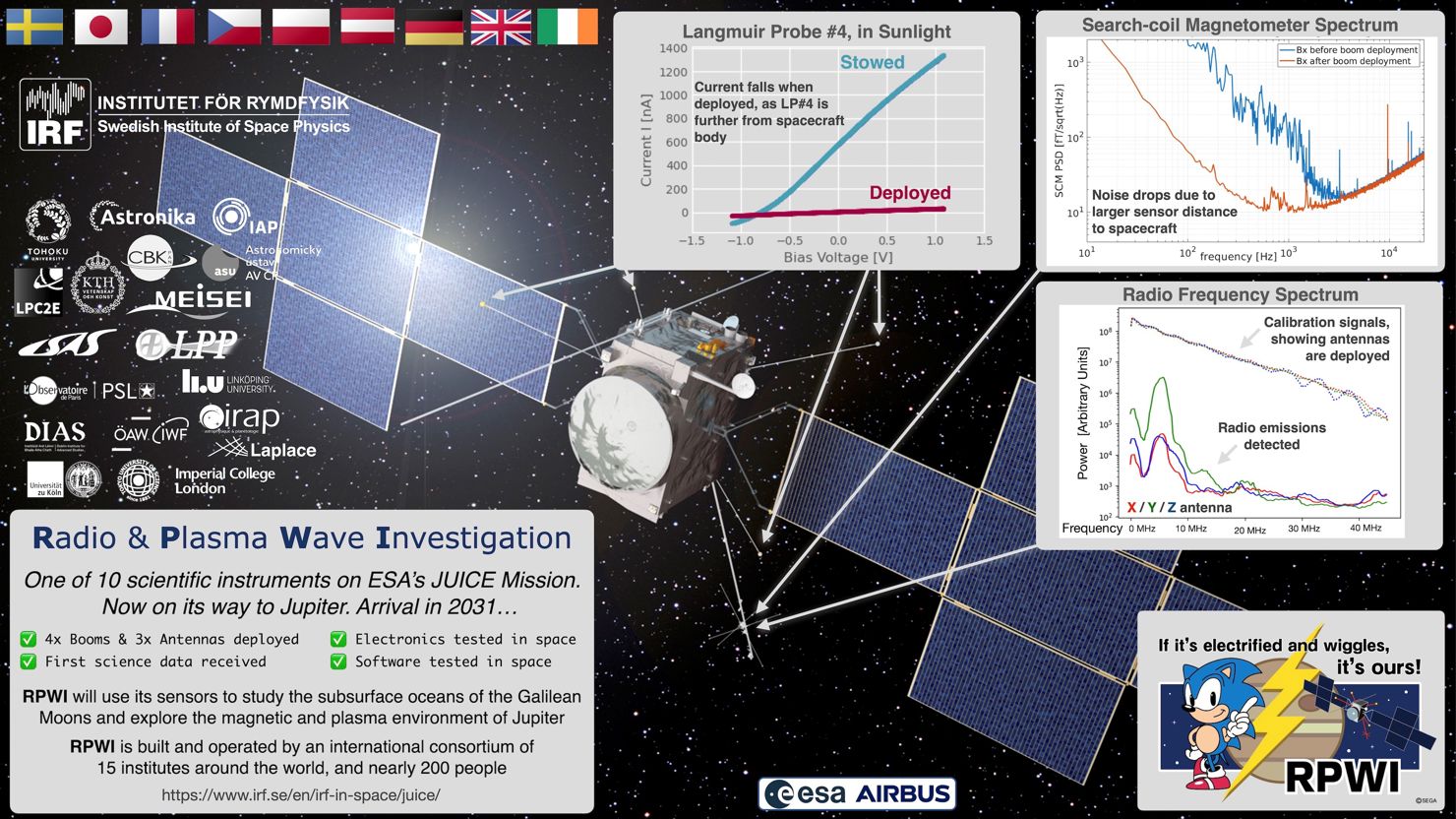I april påbörjade rymdsonden Juice (JUpiter ICy moons Explorer) sin åtta år långa färd till Jupiter. Rymdsonden, som är Europas största vetenskapliga expedition någonsin, ska observera den stora gasplaneten och dess isiga månar: Ganymedes, Callisto och Europa. Huvudmålet är att ta reda på om det finns förutsättningar för liv i Jupiters planetsystem. Sedan uppsändningen har Juice gjort sig klar för sitt vetenskapliga uppdrag.
Juice är inte bara Europas största rymdäventyr hittills, det är även ett jätteprojekt för Sverige och svenska forskare. I drygt tio år har forskare och ingenjörer på Institutet för rymdfysik (IRF) arbetat med att ta fram flera avancerade delar och sensorer för Juice-projektet. IRF i Kiruna ansvarar för instrumentpaketet Particle Environment Package (PEP), medan IRF i Uppsala leder arbetet med instrumentet Radio and Plasma Wave Investigation (RPWI).
IRF har haft hand om hela utvecklingsprocessen, från idé till färdig produkt, inklusive ritningar, beräkningar, simuleringar, tillverkning, integrering och tester. Till sin hjälp har de haft ett internationellt team av forskare från flera håll av Europa och även Japan.
PEP ska studera växelverkan mellan rymden och Jupiters isiga månar. Instrumentets olika sensorer ska undersöka hur neutrala och laddade partiklar, så som joner, elektroner och atomer, beter sig i magnetosfären och det elektriska fält som finns runtom Jupiter.
Instrumentet RPWI ska bland annat mäta magnetiska och elektriska fält på Jupiters månar. Instrumentet används för att kunna dra ytterligare slutsatser om hur magnetosfären fungerar, särskilt hur magnetfälten kan ge upphov till nya fenomen. Förhoppningen med RPWI är att kunna bidra till att kartlägga eventuella havsströmmar under istäcket på Jupiters månar.
Bommarna utfällda och sensorerna redo för RPWI
Den senaste veckan har bland andra Jan-Erik Wahlund och Jan Bergman från IRF befunnit sig i den europeiska rymdorganisationen ESA:s kontrollcenter i Darmstadt, Tyskland, för att överse när instrumentet satts i drift. Nedan följer ett pressmeddelande på engelska från den internationella forskargruppen bakom RPWI om vad som gjorts och vad som händer framöver.



